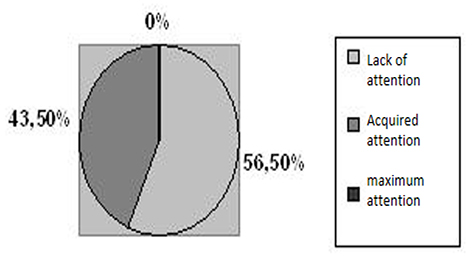
10.15198/seeci.2016.39.127-153
RESEARCH
PROMOTING ATTENTION AND PROSOCIAL BEHAVIOR BY MEANS OF MUSICAL TEACHING
FOMENTO DE LA ATENCIÓN Y LA CONDUCTA PROSOCIAL MEDIANTE LA ENSEÑANZA MUSICAL
Ana-María Botella-Nicolás1 Profesora contratada doctora del Departamento de Didáctica de la Expresión musical, plástica y corporal de la Facultad de Magisterio de la Universitat de València.
Carolina Montesinos-Boscá1
1Universitat de València. Spain
ABSTRACT
The main purpose of this paper is to research the degree of evolution of the capacity of attention and prosocial behavior in elementary-second-grade children by teaching music. For these purposes, a quasi-experimental design was adopted which had various tests that were developed in 7 sessions divided into three phases: pre-test, intervention and post-test, in which 24 children participated. The results obtained were consistent with the hypothesis to reflect a positive development that led us to conclude that music teaching favorably promotes attention and prosocial behavior.
KEY WORDS: Attention, prosocial behavior, musical education, educational research, primary education
RESUMEN
El propósito principal de este artículo es investigar el grado de evolución de la capacidad de atención y de la conducta prosocial en alumnado de segundo curso de primaria mediante la enseñanza de la música. Se utilizó un diseño cuasiexperimental con diversas pruebas que se desarrollaron en 7 sesiones divididas en tres fases: pre-test, intervención y post-test, en las que participaron 24 niños y niñas. Los resultados obtenidos se correspondieron con la hipótesis planteada al reflejar una evolución positiva que nos condujo a concluir que la enseñanza de la música fomenta favorablemente la atención y la conducta prosocial.
PALABRAS CLAVE: Atención, conducta prosocial, enseñanza musical, investigación educativa, educación primaria
Recibido: 12/12/2015
Aceptado: 19/02/2016
Correspondence: Ana María Botella Nicolás, Profesora del Departamento de Didáctica de la Expresión musical, plástica y corporal de la Facultad de Magisterio de la Universitat de València.
ana.maria.botella@uv.es
Carolina Montesinos Boscá, Universitat de València
cmontesinos.bosca@gmail.com
1. INTRODUCTION
The interest in promoting good behavior or attention is very much alive in today’s society as can often be seen in the media, in the almost daily conversations between parents or in daily activities of any school. The solutions usually proposed at the present time to solve the problem of unwanted behaviors and improving attention are diverse. This article starts from the assumption that teaching music can be a good activity to promote the improvement of these capabilities. Thus, through music-teaching-based activities we seek to promote attention and prosocial behavior and thus achieve greater academic achievement, better attention and concentration when working, without forgetting the good climate and coexistence of students in the classroom, in order to learn to live in society in a fair and equal manner.
The study was conducted in a class with 24 elementary students of Blasco Ibanez School of Elementary and Child Education in Algemesí city (Valencia, Spain). It was noted that in the class there was predominance of a great diversity regarding academic performance and little friendly relations. Therefore, to improve this situation, the idea of increasing attention and concentration without neglecting the emotional and prosocial behavior was raised, considering that music would be a good tool for intervention.
We also considered it important to promote prosocial behavior of students because bad relationships and antisocial behavior may lead them to delay their development and growth and cause learning problems. Teaching music was used as it facilitates human relations and enables individuals to adapt to their environment. Likewise, it was deemed appropriate to work on the attention capacity as it was considered essential for optimal academic performance. Music is a good tool to improve attention as it is a stimulus to enrich the sensory and cognitive process in addition to capturing the interest of students. Through it you can perform various activities in order to create listening habits and, consequently, stimulation of attention and memory. Music offers a variety of activities that can be rhythmic, vocal, auditory or instrumental.
1.1. Effects of music on humans
As stated by Betés de Toro (2000), music exerts its effect on various levels or dimensions of the human being. Some of the effects observed in recent years are:
a) Physiological dimension. Music produces physiological responses, although sometimes they are not easy to predict. These responses can occur mainly on breathing, in the pulse and blood pressure, brain waves and muscle activity.
b) Emotional Dimension. Betés de Toro (2000) believes that music has an effect on an emotional level and such as communicating and expressing an emotional state (fear, sadness, joy ...), it helps to express deep emotions and provokes emotions and feelings.
c) Spiritual dimension. Music offers peace, tranquility, feeling of happiness, etc
d) Cognitive dimension. Davis, Gfeller and Thaut (2000) find that certain musical activities can help develop pre-academic and academic skills and help the stimulation of cognitive functions such as language and attention.
e) Social dimension: the effects of music foster social integration, contribute to social relations, facilitate group cohesion, invite dialogue and communication with group members, etc.
1.2. Attention. Conceptual approach
As noted in the preceding section, among the different effects caused by music in the cognitive dimension is the stimulation of the ability of attention. Throughout time, many authors have offered different ways to explain what attention consists of. Notably Estevez-Gonzalez, Garcia-Sanchez and Junqué (1997), who believe that humans constantly receive sensory stimuli from outside and inside the body. These stimuli are abundant and the nervous system cannot process them in parallel. Therefore, attention is a process that is responsible for selecting and organizing the perception of stimuli, ie, it regulates the entry of information and is also involved in the processing of information itself. This capability can be worked and developed progressively from infancy to adulthood. Therefore, there is reference to the definition offered by Ballesteros (2002), who defines attention as the ability to direct our mental resources on some aspects of the environment, the most important, or on the implementation of certain actions that we consider most appropriate from among the possible ones.
Attention should be developed and worked at school since it is considered essential for good academic performance. When attention is carried out, it involves various functions such as exercising control over cognitive ability, enabling the body to new and planned situations, determining the direction of attention –motivation- and ensuring adequate perceptual processing of the most important sensory stimuli ( Ballesteros, 2002).
1.3. Types of attention
Ballesteros (2002) proposes the following classification for the different types of existing attention:
– Depending on the origin and nature of stimuli, attention may be internal, when it is directed towards the mentally or external processes themselves, when it is directed to all kinds of stimulation that comes from abroad.
– According to the attitude of the subject, attention will be voluntary -active-, in which the individual decides the scope of his attentional capacity, or involuntary -passive-, in which the power of the stimulus is the one that attracts the individual.
As for the motor manifestations, there may be open attention, accompanied by a series of physiological responses, or covert attention, which cannot be detected through observation. Depending on the interest of the subject, it will be divided attention or selective attention, ie focused attention. In divided attention, there are various stimuli or situations to which attention is paid. In selective attention, the effort is directed toward a particular field which other psychological processes can influence. According to the sensory modality, it can be visual attention related to spatial concepts or auditory attention related to temporary parameters. Finally, another kind of attention can be added, sustained attention, as affirmed by Sánchez-Carpintero and Narbonne (2001), which makes it possible to keep attention focused on a stimulus or a task for long periods of time.
1.4. Attention and musical teaching
Betés de Toro (2000) believes that music exerts its effect on various levels or dimensions of the human being. Reference to the cognitive dimension is made, in which Davis, Gfeller and Thaut (2000) find that certain musical activities can help develop pre-academic and academic skills as well as help stimulate cognitive functions such as language and attention.
Also, Senquiz (2002) refers to the fact that, intellectually, music develops attention capacity, promotes imagination and creativity. It stimulates skills like concentration and memory. It facilitates learning because it keeps brain cells active and promotes the use of various arguments at a time, since sound elements are differentially perceived and synthesized in the capture of an integrated, harmonious and logical message.
According to Soto (2002), cited in Elvira (2004) research has been done at the Institute of Neurology in London, where it has been shown that the corpus callosum of the brain is thicker and more developed in musicians than in the other people. This leads to the conclusion that music increases neural connections and stimulates learning and creativity. Music promotes complete brain activity.
Musical Education includes research through musical methods that have led to develop skills and habits of attention and concentration from the sounds. Martin (2006) mentions the methodological systems of Zoltan Kodaly and Orff-Schulwerk. It has been found that Kodaly’s method improves concentration and attention among other factors. At the Elementary School in Clifton, Kodaly’s method was applied in voice and movement and Orff as regards vocal and instrumental resources. It was noted that exercises of hearing rhythms and tones and practicing phononymy helped increase the durations of attention of some of the slowest children to learn. It was also found that these exercises encourage the tonal memory, increase concentration and attention. Importantly, these methods provide resources such as body movements, hand signals, games and folk songs. Music is a good tool to work on attention because children show interest in it. By this we can carry out various activities in order to create habits of listening and following stimulation of attention and memory. These activities can be as much rhythmic as vocal, auditory or instrumental.
1.5. Prosocial behavior. Conceptual approach
Garaigordobil (2013) states two types of prosocial behavior:
a) where there is a mutual benefit to both parties involved in the interpersonal relationship.
b) those that only benefit one party. In this case, the motivational approach appears, ie if prosocial behaviors are altruistic or not.
Prosocial behavior is carried out with an intention defined by (Pérez, 2011). This behavior is voluntary and the reasons may be varied, that is, would be non-altruistic (selfishness, for the approval of others) and altruistic (for empathy, compassion and desire to care for others).
Considering the previously targeted features, Garaigordobil (2013, p. 44) proposes a definition of prosocial behavior, “any positive social behavior that is done to benefit another with / without altruistic motivation.” This definition includes behaviors such as giving, helping, cooperation, sharing or comfort. Strayer (1981) presents four types of activities of prosocial behavior: sharing and exchanging activities, cooperative, helpful and empathetic activities.
The speech in question is intended to encourage the altruistic motivation in prosocial behavior of students; therefore, we should re-refine the definition of prosocial behavior tailored to the interests of this speech. This definition is expressed by Roche-Olivar (2004, p. 39):
Actions that benefit other persons, groups (according to the criteria of these) or objectively positive social goals, with no material, external or extrinsic rewards, and increase the likelihood of generating high-quality, positive, solidarity-based reciprocity in interpersonal or consequent social relations, safeguarding the identity, creativity and initiative of the individuals or groups involved.
1.6. Prosocial actions
Roche-Olivar (2004) provides a number of prosocial actions that he believes should be taken into account in school education: physical assistance, physical service, verbal support, give verbal consolation, confirmation and valorization of the other, deep listening, empathy, solidarity, positive presence and unity. Based on the prosocial actions stated by Roche-Olivar (1995), he delves into the development of a few during the intervention to be carried out, which are described below:
Help. positive behavior that can be both verbal and non-verbal that benefits others and fulfills a particular goal. The person offering help make it selflessly in order to benefit the other.
Cooperation. This behavior is not in the list of Roche, as it is a way to help. In this case, as Garaigordobil said (2003), there is exchange in which individuals help each other for a benefit in common, that is, the group members give and receive help from each other to achieve the same end. These are related in such a way that everyone can achieve their objective if, and only if, the others reach theirs. Therefore, we must differentiate it from the competitive situation, which is one in which an individual reaches an end if, and only if others fail to reach theirs.
Listen deep. Roche-Oliver (1995) refers to sounds like behaviors of attention and respect to the interlocutor in a conversation or debate. It expresses patient reception of what the speaker is saying.
Empathy. It is the ability to understand and tune into the feelings of others. By expressing ideas and thoughts of oneself, the other party voluntarily understands that their thoughts and emotions are understood.
Self esteem. This is not a prosocial action per se, but it is interesting to deal with it as a prosocial skill as it is necessary to be aware and reinforce the positive aspects of oneself to, this way, learn to recognize emotions and acquire an affective language in order to have a good interpersonal relationship and reach empathy.
Confirmation and valorization of the other. Appreciate other people verbally that helps increase their self-esteem. For example, appreciate the good behavior of others through words of sympathy or praise.
1.7. Socioaffective education at school
Perez (2011) maintains that socioaffective education has been very limited and shows a resume to work it at school. It indicates that first one should think about what kind of society we want and what kind of persons the students are intended to be. It uses the “systemic model” which takes into account the teaching of knowledge to reinforce good behavior, gain autonomy through strategies and techniques, and establish democratic functioning in the classroom. All this without forgetting the acquisition of knowledge. It takes into account the development of socioaffectivity from the formal curriculum and paracurriculum. The formal curriculum provides strategies to promote socio-cognitive skills (they acquire values, reflective thinking and evolve from an egocentric to a more interpersonal perspective), emotional (self-esteem, positive self-image and self-knowledge that leads to empathy) and behavioral (self-regulation, be respectful to others, listening thoughtfully and able to solve problems among classmates through negotiation and mediation. The paracurriculum or implicit curriculum is responsible for taking into account the change in relationships (rules, discipline) and working methods for learning social-emotional skills in the organization and the educational policy in the center. That is, the stimulating relationships of teachers to students, democratic discipline and cooperative learning, counting on the heterogeneity of the individuals in the group, rewards and division of labor.
1.8. Prosocial behavior and music
Betés de Toro (2000) believes that music exerts its effect on various dimensions of the human being and highlights the social dimension. That author explains that the effects of music foster social integration, contribute to social relations, facilitate group cohesion, invite dialogue and communication with group members, etc.
From the point of view of musical education, Perez (. 2008, p 191) argues the socializing character of music:
Because of its features, musical education has a special emotional effect on children, more than other phenomena that may be related to reality (such as the independence of the people, nature, home, freedom ...). It organizes and disciplines children, who have to acquire it within the community, enriches their emotional life and helps them to express themselves and to establish social relations that reinforce collective work. Music involves communication among men, strengthen friendship and mutual understanding, being, in short, a very effective means for moral and aesthetic education.
In short, music is considered a good means to promote prosocial behavior through teaching. Betés del Toro (2000) states that it is accessible to all individuals and the community. It fits both the individual and the group as it is flexible. It provides security because it has order and structure. It influences the quality of life through its aesthetics. It has a non-verbal symbolic language that reaches all individuals regardless of their conditions or moods. And being multidimensional, you can promote core competencies through it. Unlike musical education, musical therapy uses music as a means, not as an end, it is not intended to train musicians. However, as in the case of this procedure, in some cases the music therapist can consider important to make the patient learn musical knowledge in order to improve socioaffective characteristics of the individual or other therapeutic purposes. Notably, prosocial behavior is intended to be fostered through musical education, these purposes are both social and educational. Therefore, the intervention that will take place is not musical therapy.
Promoting pro-social skills and preventing aggression through music has attracted interest from several associations that have already been implemented, such as:
The contribution of Guevara (2009) on “Batuta” foundation (Batuta, National System of Youth Orchestras and Children, 2007) which has the same objective as this intervention, train children in musical skills without leaving aside the socializing function. This foundation takes as a means the creation of orchestral groups and works on them to encourage both individual and collective values (self-esteem, concentration, respect, security, equality, discipline, belonging and tolerance). Guevara (2009) also talks about the direction of children and young people from the Ministry of Culture with its National Plan of Music for Coexistence (Ministry of Culture, 2006), which aims to improve relationships and build autonomy from musical development.
Moreover, through Social Musical Therapy interventions such as that of Guevara (2009), prosociality is also promoted and the risk of aggression is intended to be reduced, in this case in elementary school children in Bogota, Colombia. This focuses on promoting prosocial skills using music as a means but leaving the musical development of the individual as a secondary task. According to Skunk (2004), cited by Guevara (2009), though there is little research at school on the use of musical therapy to treat prosociality, it has been shown that using music as a means to promoted prosociality helps activate participation and integration of children with their environment and also helps stimulate the basic repertoires of learning.
To summarize, we should mention the contribution of Martin (2006), who stresses that both the objectives of musical therapy and those pursued in normal schooling are not much different. In the two cases, it is intended to promote socialization, self-esteem, improve care, etc. For that reason, Martin considers advisable for music teachers to share information on skills, knowledge and research with other teachers in order to use music as a productive resource to successfully meet the needs of students.
2. OBJECTIVES AND HYPOTHESES
The proposed objectives are to achieve development of attention and prosocial behavior by teaching music to second-grade students. It aims to promote the attention of students by focusing on three types of attention: sustained, divided and selective. As for prosocial behavior, we want to develop the following skills in children: empathy, confirmation and valorization of the other, self-esteem, cooperation, help and respect and listening.
As a hypothesis, it was estimated that, after application of the intervention, students have improved their prosocial behavior and the various types of attention, despite the short time available. It was considered that this period would determine the degree of improvement not to be very relevant, but relevant enough to prove the hypothesis that it would have a favorable evolution however small.
3. METHODOLOGY
The methodological process was developed in five stages:
Phase 1, pre-test. It consisted of an initial assessment of the attention skills and prosocial behaviors. To collect data, a session was used and the following tools were used:
– Test of evaluation of selective attention
– Test of evaluation of divided attention
– Test of evaluation of sustained attention
– Sociometric questionnaire aimed at students
– Sociometric questionnaire aimed at educator
Phase 2, Intervention Plan. According to the information provided by the results of the pre-test phase, the objectives of the intervention were raised and activities were planned.
Phase 3, Intervention. It lasted five sessions. The technique of direct observation was used to assess each session. In each, musical activities aimed at building the capacity of attention and prosocial behavior of students were carried out.
Phase 4, post-test. It lasted a session and the same assessment tools as in the pre-test phase were used.
Phase 5, Data analysis and interpretation. The data obtained in the post-test and pre-test were quantitatively analyzed, ie, by using percentages, the amount of students who had the measured capacities was analyzed. Then, data were organized into pie charts depending on the objectives sought, the results of the two stages were also compared and eventually these results were interpreted.
3.1. Type of students
The intervention targeted elementary-second-grade students (24 children) of CEIP Blasco Ibanez in Algemesí city (Valencia). The center has a high percentage of immigrants of Maghrebi and Romanian origin, who are characterized by their high mobility due to labor issues concerning their parents. There are also students from families of South American, Chinese, Japanese origin and others. With regard to indigenous families they are characterized by representing one of the lowest percentages in the education of this school and they largely involve structuring problems, unfriendly separation, custody of children or any other problem that usually affects the behavior or academic performance of children at school.
In the observations, a deficit was detected in terms of academic achievement and prosocial relationships. Frequent disputes and aggressions including mockery of the laggard students, lack of cooperation and assistance were observed while some of them showed strong competitiveness. Also disrespect not only to classmates but to teachers as well, since some of them barely heard the explanations of the teacher and continually altered the pace of the lesson by talking to others.
3.2. Assessment instruments: pre-test and post-test
To evaluate the evolution of the capacity of attention and prosocial behavior, an evaluation process was developed in the pre-test and post-test phases. The process of pre-test phase was to be completed in a 45-minute session, various tests before the start of the intervention, with the idea of observing the initial level of these skills, identifying their deficits and planning appropriate intervention to develop them. Subsequently, after application of the intervention, in the post-test phase, students filled out the same test presented in the previous phase in order to check progress.
Tests were divided into two sections that include, on the one hand, the tests related to attention capacity and, secondly, the questionnaires assessing prosocial behavior. As for the tests relating to the attention capacity, they took into account the three main types of attention: divided attention, sustained attention and selective attention, which were evaluated by auditory discrimination activities of timbre and intensity. For the evaluation of prosocial behavior, the parameters of self-esteem, empathy, cooperation, help, respect and listen were taken into account through two questionnaires, one that was completed by the teacher and another by students.
The direct observation technique was also used as an assessment tool with which it was possible to detect the deficit of students both at the levels of both attention and prosociality. Also, during the evaluative pre-test and post-test phases and during the intervention, participation, compliance with the rules, the group climate, listening, interaction and cooperation aid, ie, prosocial actions sought to be encouraged as well as the positive and negative elements of the session were used as a tool to analyze the pleasure level of students in each of the activities.
3.3. Design and procedure of the intervention program
Intervention consisted of three phases: initial pre-test phase (1 session), the intervention phase (5 sessions) and post-test phase (1 session). As a whole, 7 sessions divided into two per week and with a duration of 45 minutes. The intervention was designed based on the results observed in the pre-test phase. A series of activities were developed to jointly enhance both prosocial skills such as attention capacity in which deficits were observed in the pre-test phase. The aforementioned objectives were established and sessions were planned with their respective activities in the intervention phase. Each session was organized for the purpose of containing one or two activities and discussion of final thought. The activities were planned based on the information contained in the articles, papers and dissertations that relate musical development to fostering the proposed capacities. It should be noted that although social behavior is closely related to attention, interventions that were studied fostered them separately. However, looking at these two gaps in students, we aimed to find a way to promote them jointly and through musical activities.
To encourage prosociality, the activities that were worked in the intervention were cooperative in nature, by teams, classmate assistance, empathetic such as the student in the role of tutor, building self-esteem through the election of representatives and positive valuation of the other when taking into account the efforts of their classmates to do the activities. At the same time, in these activities, selective attention was worked through music by focusing their attention on a particular stimulus, attention divided into activities the objective of which was to have students pay attention be paid to various stimuli at the same time, and sustained attention through tasks requiring lasting attention in time to get their success.
The intervention was planned for all the desired objectives to be worked; however, working some more than others was inevitable. That is, in terms of attention capacity, sustained attention was worked in 5 sessions, divided attention in 3 and selective attention in 2. As for pro-social skills, cooperation was worked in 4 sessions, self-esteem, listening and respect in 3 and support and positive assessment of the other in 1 session. Subsequently, it was noted that this also influenced the results of the post-test phase.
4. DISCUSSION
4.1. Data analysis
First, the obtained in the pre-test phase were analyzed in order to plan the intervention sessions, considering the characteristics of each student. Secondly, to verify the efficiency of the applied intervention, a quantitative analysis was carried out with the computing program SPSS, version 19.0, ie data of each phase were grouped in parameters, transformed into percentages, represented in pie charts and the prest-test and post-test phases were compared between themselves.
As for the three attention-evaluating tests, the data were collected grouped into parameters. That is, according to the grade obtained in the tests, students were classified into “students lacking attention capacity” for those whose grade ranged from 0 to 4,99, “students with acquired attention” for those whose grade ranged from 5 to 8,99, and “students with maximum attention capacity” for those whose grade ranged from 9 to 10 points. Once grouped, the amounts of each type of student were calculated into percentages and represented in pie charts to observe what sectors predominated in the class in order to quantify the level of the class as regards this capacity. Once this was done in each phase separately, the two phases were compared to observe if there had been any modifications in this capacity after applying the intervention.
In the questionnaire aimed at the teacher, data analysis was carried out taking into account the behavior of each student from the viewpoint of the teacher. That is, if a student in the questionnaire had more x in “Never”, he was classified as a student lacking prosocial behavior, the student who had more x in “sometime” was classified as a student with little prosocial behavior and the student who had more x in “Almost always” was classified as a student with high prosocial behavior. Through this, we intended to measure the number of students in the class with high prosocial behavior, with little level and without prosocial behavior. Once the pre-test and post-test phases were analyzed, they were compared to observe the evolution.
As regards the analysis of the questionnaires targeting the students, all those students named in the section of congratulation were grouped in “prosocial students”. The students mentioned by their classmates in the section of improving behavior were grouped in “non-prosocial students” and, on the other hand, the number of students who were not mentioned was taken into account. With this, we verified if students considered that students with prosocial behavior or lacking it predominated in the class. Later on, the two phases were compared in order to find out if there had been any modifications in the post-test phase.
The two questionnaires having been analyzed separately, the one for the teacher and the one for the student, they were compared between themselves in each phase. That is, the questionnaire that the teacher filled out in the pre-test phase was compared with the one for the students in that phase too and, the same way, with the questionnaires of the post-test phase. The comparison process consisted of analyzing the characteristics the teacher gave to those students considered by their classmates to be prosocial or non-prosocial and not mentioned in order to observe if there had any right relationship among the opinions of the students and the teacher. We must add that the parameters in the questionnaire for the teacher corresponded to those in the questionnaire for the students in the following way: students with high prosocial behavior was identified as prosocial students, students lacking prosociality corresponded to non-prosocial students and students with little prosociality was an intermediate level but it was identified more as non-prosocial students.
Last, the results obtained in the direct observation were qualitatively analyzed, ie the evolution of students regarding their prosocial behavior during the application of the sessions and, afterward, the view of the two questionnaires was compared with these results to verify if they coincided .
4.2. Attention-capacity-evaluating tests
Divided attention capacity
The results of the study of the test of divided attention were the ones observed in Figures 1 and 2:

Graph 1: Results of the analysis of divided attention capacity in the pre-test phase
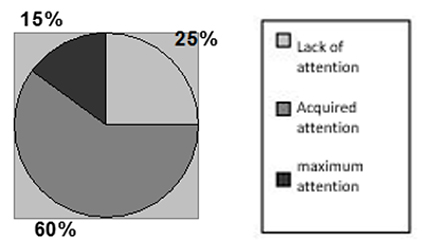
Graph 2: Results of the analysis of divided attention capacity n the post-test phase
In comparing the above graphs, you can see a quite positive evolution in terms of improving the divided attention capacity. In the pre-test phase, the predominating percentage of students is those lacking divided attention (56.50%), the second predominant sector is students with acquired divided attention (43.50%) and students with maximum attention is nonexistent.
As for the results of the post-test phase, significant differences were observed in favor of a positive evolution of this capacity in students; the majority percentage is for those students with acquired divided attention in the amount of 60% representing an absolute increase of 16.50% over the previous phase; the percentage of students with lack of divided attention is reduced to 25%, which represents a comparatively improved 31.50%, and finally, the increase in students with maximum divided attention shows a 15% improvement.
Sustained attention capacity
As for sustained attention test, the results were as follows:
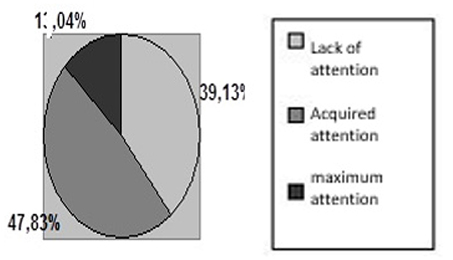
Graph 3: Results of the analysis of sustained attention capacity in the pre-test phase
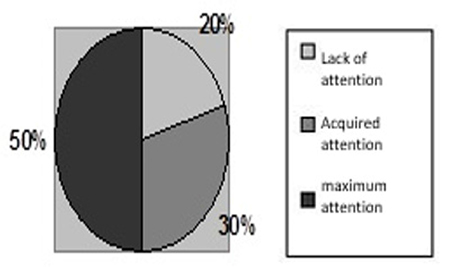
Graph 4: Results of the analysis of the sustained attention capacity in the post-test phase
In this test, a significant improvement is observed from one phase to another. In the pre-test there was a large percentage of students with lack of sustained attention (39.13%), the dominant sector was students with acquired sustained attention (47.83%), and the minority sector was students with maximum sustained attention (13.04%). However, in the post-test phase, the majority sector was students with maximum sustained attention (50%), an increase of 36.96%, the sector of students with acquired sustained attention ranking second (30%), with a decrease of 17.83%, and the minority sector was students with lack of sustained attention (20% as it was reduced by 19.13%).
Selective attention capacity.
The results obtained in the test of selective attention were as follows:
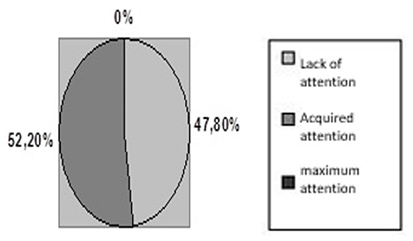
Graph 5: Results of the analysis of the selective attention capacity in the pre-test phase
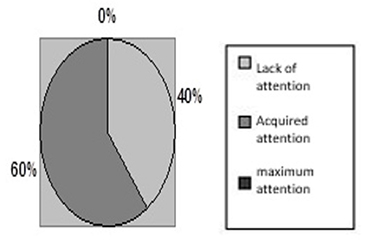
Graph 6: Results of the analysis of the selective attention capacity in the post-test phase
In this test, a favorable evolution of the selective attention capacity of students is also observed, although to a lesser extent. The maximum selective attention is nonexistent in the two phases, lack of acquired attention shows a minor difference of 7.80% in the post-test phase and an increase in acquired attention of 7.80%.
Evaluative tests of prosocial behavior of students
Sociometric questionnaire filled out by the teacher
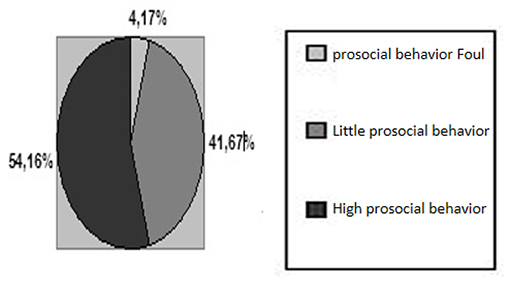
Graph 7: Results of the analysis of prosocial behavior from the point of view of the teacher in the pre-test phase
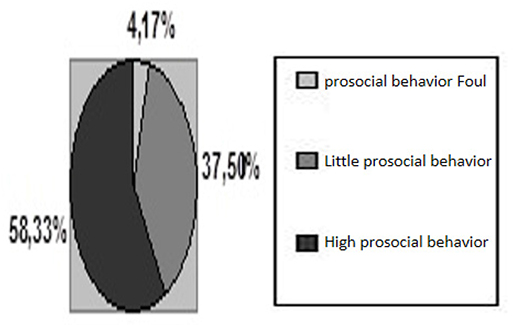
Graph 8: Results of the analysis of prosocial behavior from the point of view of the teacher in the post-test phase
The graphs show that, in the pre-test, there is predominance of the high prosocial behavior (54.16%), followed by little prosocial behavior (41.67%) and, as a minority sector, lack of prosocial behavior (4.17 %). In the post-test phase, there is an increase in students with high prosocial behavior on a percentage of 4.17%, which remains the largest sector, the sector with little prosociality is reduced by the same percentage and the percentage of students with lack of pro-sociality remains the same.
Sociogram aimed at students
The questionnaire aimed at students analyzed the number of students rated as prosocial, the prosocial students and those who were not mentioned:
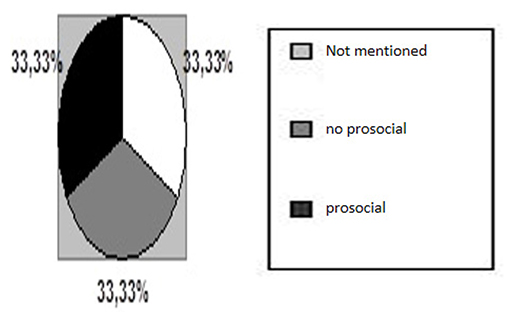
Graph 9: Results of the analysis of prosocial behavior from the standpoint of the students in the pre-test phase
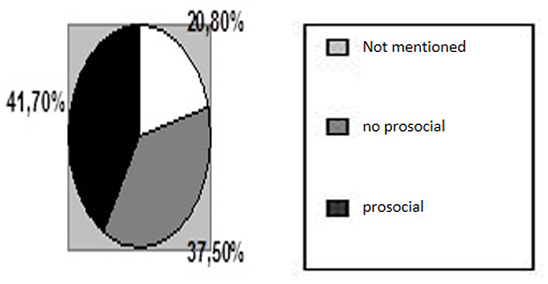
Graph 10: Results of the analysis of prosocial behavior from the point of view of the teacher in the post-test phase
An evolution of relative improvement is observed. In the pre-test phase, all sectors indicate the same percentage (33.33%). In the post-test phase, the sector of non (12.53%) is reduced, the sector of non-prosocial (4.17%) increases, and the prosocial sector also increases by 8.37% and remains being the majority sector.
Relationship between sociograms
The results of the comparison between the questionnaires completed by the students and their teacher were as follows:
In the pre-test phase
A. The students referred by their classmates as students with prosocial behavior have the following characteristics according to the teacher:
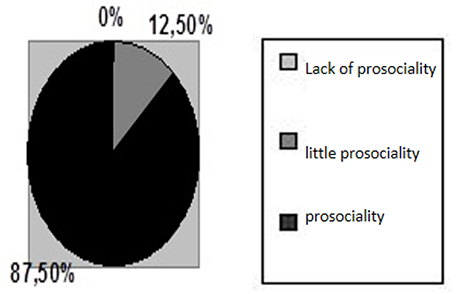
Graph 11: I Students evaluated by their classmates as prosocial analyzed from the point of view of the teacher in the pre-test phase
The students mentioned by students as prosocial are identified by the teacher as students with majority prosocial behavior, except for a small percentage that stands for their little prosocial behavior. Analyzing more deeply the questionnaire for the teacher, we note that some are little prosocial in offering help, in showing empathy with the teacher and in respecting their classmates. Notably, all have the common characteristic of being able to work in small groups.
B. For the students referred to by their classmates colleagues as non-prosocial students, we must note that, in the questionnaire for the teacher, these students are referred to as high prosocial students, students with little prosocial behavior and students with lack of prosocial behavior in these percentages:
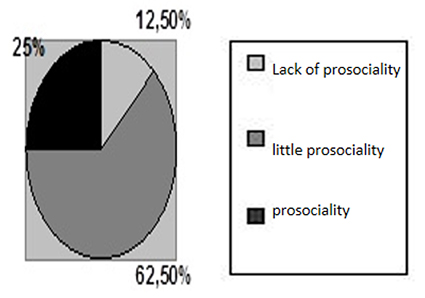
Graph 12: Students rated by their classmates as non-prosocial analyzed from the point of view of the teacher in the pre-test phase
The common features of these students are that they do not respect the teacher or the other students and, above all, they are hardly able to work in small groups.
C. Finally, with regard to students not mentioned by their classmates, reference must be made to the fact that, in the questionnaire for the teacher, they correspond to the following sectors:
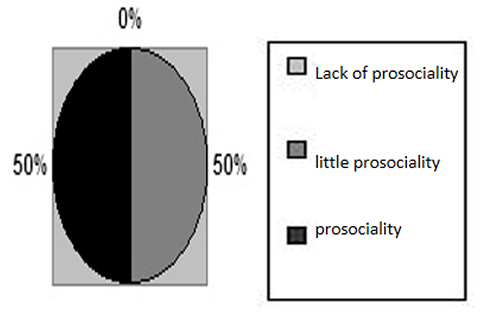
Graph 13: Students not mentioned by their classmates analyzed for their prosocial behavior from the point of visa of the teacher in the pre-test phase
These students stand out for having majority little prosocial or prosocial behavior.
In the post-test phase
A. On the other hand, with regard to the post-test phase, the students considered by their classmates as prosocial are classified by the teacher as follows:
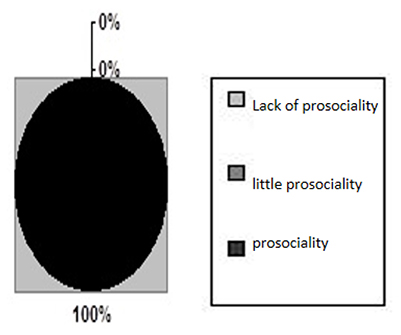
Graph 14: I Students considered to be prosocial from the point of view of the teacher in the post-test phase
It can be observed that the opinion of students corresponds completely with the view of the teacher. These students have in common that they help their classmates, respect and listen to the teacher and can work together.
B. As for the students considered by their classmates to be non-prosocial, the teacher classifies them as shown in Graph 15:
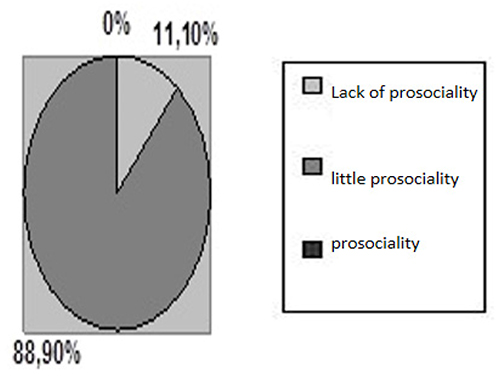
Graph 15: Students considered non-prosocial by their classmates analyzed from the point of view of the teacher in the post-test phase
It is observed that the teacher identifies the students referred by their classmates as students with little prosociality to a larger extent and as students with little prosociality to a lesser extent. It should be noted that they share characteristics such as disrespecting and not listening to the teacher and classmates and finding it difficult to work together.
C. Regarding the students not mentioned by their classmates, we must note that the teacher identifies them as students with high and low prosociality to the following extents:
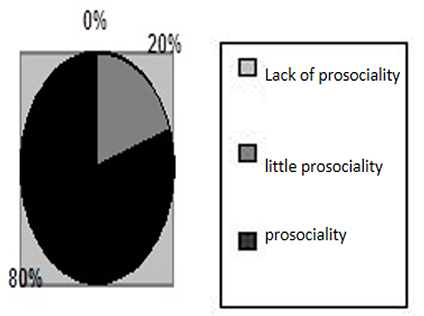
Graph 16: Students not mentioned by their classmates analyzed for their prosocial behavior from the standpoint of the teacher in the post-test phase
5. CONCLUSIONS
5.1. Attention capacity
Regarding the results of the attention capacity of students, in particular the kind of sustained attention, most of them started from an acquired level of 47.83%; there was also a high percentage of students with lack of this kind of attention: 39.13%, and a small percentage with a maximum capacity for sustained attention of 13.04%. Note that this type of attention was the second most developed capacity of the three, because in the post-test phase, there was an increase of 36.96% of students with maximum attention, this being the major sector in the class, students with lack of sustained attention decreased by 19.13%. The percentage of students capable of acquired sustained attention also decreased to a lesser extent and it ranked second largest sector. Therefore, students who improved their capacity for sustained attention was 36.96% of the class, the students with lack of attention amounting to 20% and being the smallest of the three types of attention that were worked.
With respect to the selective attention capacity, note that, initially, the improvement was somewhat less noted. In the pre-test phase, the students with acquired selective attention predominated, but only by 4.4% more than the pupils with lack of this kind of attention, and the students with maximum selective attention capacity were nonexistent. There was an Improvement in the sense that, in the post-test phase, students with acquired selective attention capacity increased by 7.8% but no one managed to reach the level of maximum selective attention.
Consequently, in this case there was a very significant improvement in the selective attention capacity to an increase of 40% of students with maximum selective attention capacity. There was a decrease of 32.2% in the percentage of students with acquired selective attention and, to a lesser extent, the students with lack of this capacity by 7.8%, which had the same value as the percentage of students with maximum capacities. Students with acquired attention became the minority sector. Therefore, 40% of students in the class improved in the development of this capacity when it was already acquired by most of them, this being the most remarkable improvement of the three types of attention that were worked. Moreover, the percentage of students with lack of inattention remained being the highest of the three types of attention capacity worked in the post-test phase (40%) and there was a little relevant improvement.
Finally, with regard to divided attention, it was found that, in the pre-test phase, the students started from a fairly low level, as the highest percentage was that of lack of attention, though with a difference of 13% compared with the percentage of students with acquired divided attention capacity, the percentage of students with maximum divided attention being nonexistent. Notably, the percentage of students with lack of this type of attention in the pre-test phase is the highest of the three types of attention that were studied; the post-test phase showed a good development as it showed a decrease of 31.5% in students with lack of capacity; with this decline there was an increase in the percentages of students with acquired capacity and maximum capacity; however, students with acquired capacity accounted for the largest increase but with a difference of 1.5%, almost irrelevant concerning the maximum capacity, thus the students classified as having acquired divided attention capacity were a majority. Therefore, the divided attention capacity increased by 31.5% of the class, that is, the smallest improvement of the three types of attention that were studied.
To summarize, the intervention applied to students contributed to the improvement of the three types of attention. Based on the latest reflections and modifications, the selective attention capacity was the capacity with greater improvement in the students since it comprised 40% of the class; however, though lack of this capacity decreased, the students with lack of this capacity was the highest percentage of the three types of attention that were studied (40%); secondly, 36.96% of students improved their sustained attention capacity, the percentage of students with lack of attention being the smallest of the three types of attention that were worked with 20%, and the number of students with maximum attention capacity ranked first with 50%; thirdly, in the development of divided attention, the students who improved this capacity were 31.5% of the class. Finally, we must note that, currently, as regards the percentage of students with maximum attention capacity, the sustained attention capacity is the majority among students (50%); selective attention ranks second (40%) and, finally, divided attention (15%). However, if we take into account the students who have acquired these capacities either basically or to a maximum level, sustained attention is the most acquired by students (80%); divided attention ranks second (75%) and; Finally, selective attention (60%). I believe that the way each type of attention has been worked has influenced these results because, sustained attention was worked in five sessions, divided attention in three and selective attention in two, which has caused that, the more we have worked each type of attention, the more the number of students with lack of these capacities has decreased.
5.2. Prosocial behavior
As for the prosocial behavior of students, from the perspective of the teacher, we observed that there was a little positive evolution when Implementing the intervention, which is shown in the results of the questionnaire of the post-test phase in which there is an Increase in the percentage of students with high prosocial behavior by 4.17% compared to the pre-test phase, representing the majority sector in the two phases. The number of students with of little prosociality is reduced and the percentage of students with lack of prosociality is maintained. The percentage of students who developed their prosocial behavior is hardly significant as they accounted for an increase of only 4.17%. In the post-test phase, though the majority remains being the students with high prosociality, the students with little or lack of prosociality remain an Important sector of the class because they only differ from students with high prosociality in 16.66% less.
With regard to the questionnaire for students, while in the pre-test phase all the sectors had the same percentage, in the post-test phase the majority became students with prosocial behavior with an Increase of 8.73%, although there is still a large section of the class considered non-prosocial which differs from the percentage of prosocial students in only 4.17%. The students did not worsen their behavior, on the contrary, we think they improved it. However, students were mentioned in the post-test phase who had been unnoticed in the pre-test phase; that is why both non-prosocial and prosocial students increased in this last phase.
When comparing the questionnaire for to the teacher and the one for students, it was noted that there is significant interaction between the two, both in the pre-test and in the post-test phases, but in the post-test phase the results were more similar. Both coincided in the fact that the prosocial students were the majority and in the contemplation of an improvement in behavior. In the pre-test phase, students mentioned prosocial students whom the teacher rated equally though to a lesser percentage, the little prosocial students appeared. As to the students mentioned as non-prosocial, the teacher in most cases classified them as little prosocial, to a lesser percentage as high prosocial and the non-prosocial as a minority; those who were not mentioned were unnoticed and they were both prosocial and little prosocial.
Therefore, we must emphasize that, in the pre-test phase, the students and the teacher did not have the same opinion of the Individuals in the class, though their approach is fairly close. The teacher believes that there are more prosocial students than what students perceived in their classmates. In the post-test phase, a closer relationship between the view of the teacher and that of students was observed. The students and the teacher coincided in those ranked as prosocial. As to the students mentioned as being non-prosocial, to a lesser extent the teacher classified them as non-prosocial and, to a larger extent, as little prosocial. The graph of unmentioned students shows that students whom the teacher considered to be high prosocial and little prosocial were unnoticed. Consequently, we summarize that the teacher and the students offer a pretty approximate view of the behavior of individuals in the class, but the teacher observes more prosociality. As for the students, it is noteworthy that students consider the students whom the teacher considers able to work together, listen to and respect the teacher to be prosocial, and those less able to work together and showing little respect for the teacher are considered non-prosocial. Students attached less importance in the pre-test phase to offering assistance to classmates or being respectful to one another, Therefore, in some cases they mentioned classmates who lack these abilities as being prosocial.
5.3. Direct observation
Direct observation of the activities of this intervention showed how students got better prosocial behavior with respect to the teacher and the other classmates. In the pre-test phase, we can see a rather negative behavior by students in terms of lack of listening to and respecting the teacher; however we observed interactions of help among them. In the first session of the intervention, a significant improvement occurred in their attention and respect for the teacher, in a climate of a very organized and peaceful group, perhaps due to the newness of the activities that aroused their interest. In the second session, prosocial behavior decreases again, as some of them did not listen to the teacher, although most were interested. Also, there was rejection to be part of a group with certain classmates but the behavior of helping others remains. The third, fourth and fifth sessions Including the post-test session were very positive, in which only pro-social behaviors were observed as students listened to and respected the teacher and their classmates, lending to supportive and cooperative behaviors. Therefore, relating direct observations to those of the teacher and students in the class, we can show an Increase in prosocial behavior of students.
5.4. Final remarks
Finally, we can conclude that this piece of research allowed us to verify the initial hypothesis musical education contributes in the field of education to improved attention and prosocial behavior. However, they did not develop equally, since the attention capacity progressed further and prosocial behavior developed less. As for the attention capacity, it was noted that it improvement was influenced by the working time, the best results being obtained in the most worked types of attention. Regarding prosociality, although, according to the teacher and students, the number of students showing improvement is hardly relevant, significant progress was noticed during the intervention, mostly as regards respect, support and cooperation and, to a lesser extent, self-esteem, empathy and positive appreciation of others. We must note that the percentage of improvement did not exceed 40%, which is not inconsiderable if we consider that the duration of the intervention was brief. This leads us to be optimistic in the Implementation of musical education at school because achieving positive results in terms of attention capacity and prosocial behavior among students is just a matter of time.
REFERENCES
1. Ballesteros S (2002). Psicología General. Un enfoque cognitivo para el siglo XXI. Madrid: Editorial Universitas.
2. Betés-de-Toro M (2000). Fundamentos de musicoterapia. Madrid: Ediciones Morata, 2000.
3. Campos E, Caño M, Carrión D, Gallardo C, González I, et al (2008). Aplicaciones Didácticas de la Musicoterapia en el Aula de Primaria. Málaga: Ediciones Guillermo Castilla.
4. Davis WB, Thaut MH, Gfeller KE (2000). Introducción a la musicoterapia: teoría y práctica. Barcelona: Boileau.
5. Elvira MA (2004). Propuesta Pedagógica para la utilización de la musicoterapia en la atención de niños que presentan dificultades de aprendizaje. (Tesis de Grado). Universidad Nacional Abierta, Caracas.
6. Estévez-González A, García-Sánchez C, Junqué C (1989). La atención: una compleja función cerebral. Revista de neurología, 25 (148):1989-1997.
7. Garaigordobil M (2003). Diseño y evaluación de un programa de intervención socioemocional para promover la conducta prosocial y prevenir la violencia. Primer premio nacional de investigación educativa. España: Centro de Investigación y Documentación Educativa (C.I.D.E).
8. Guevara MP (2009). Intervención musicoterapéutica para promover la prosocialidad y reducir el riesgo de agresividad en niños de básica primaria y preescolar en Bogotá, Colombia. International Journal of Psychological Research, 2(2):128-136.
9. Lacárcel J (2003). Psicología de la música y emoción musical. Revista Educatio, 20-21, 213-226.
10. Martín E (2006). Aptitudes musicales y atención en niños entre diez y doce años. (Tesis inédita de doctorado). Departamento de psicología y sociología de la educación, Universidad de Extremadura.
11. Pérez S (2008). El ritmo: una herramienta para la integración social. Ensayos: Revista de la Facultad de Educación de Albacete, 23, 189-198.
12. Pérez D (2011). Programa de Intervención Musicoterapéutica breve para el Incremento de la Prosocialidad en centros de Educación Secundaria, dentro del Programa de Acción Tutorial. (Tesina de Máster). Máster en Musicoterapia ISEP, Valencia.
13. Roche-Olivae R (1995). Psicología y educación para la prosocialidad. Bellaterra: Servicio de publicaciones Universidad Autónoma de Barcelona.
14. Roche-Olivar R (2004). Inteligencia prosocial: educación de las emociones y valores. Bellaterra: Servicio de publicaciones Universidad Autónoma de Barcelona.
15. Sánchez-Carpintero R, Narbona J (2001). Revisión conceptual del sistema ejecutivo y su estudio en el niño con trastorno por déficit de atención e hiperactividad. Revista de Neurología, 33, 47-53.
16. Senquiz A (2002). Musicoterapia. Recuperado de http://www.saludparati.com/musicoterapia
17. Soto G (2002). La música: un factor de evolución social y humana. Recuperado de http://iieh.com/autores/gsoto.html
18. Strayer F (1981). The nature and organization of altruistic behavior among preschool children. En Rushton JP, Sorrentino RM (Eds.), Altruism and helping behavior. Hillsdale: Lawrence Erlbaum.
AUTHORS
Ana María Botella Nicolás
Doctor of Pedagogy from the University of Valencia. She graduated in Geography and History, specialized in Musicology and is a Musical Education teacher, from the University of Oviedo. She has a professional degree specializing in piano. In 2001 she obtained by opposition a place as a music teacher at high school in Alicante (currently on leave). She has presented several communications in seminars and conferences on music didactics and has several publications. She is senior lecturer at the Department of Didactics of Musical, Plastic and Corporal Expression of the Faculty of Education at the University of Valencia. She is part of the Academic Coordination Committee for Master’s Degree in Teacher of high school of UVEG and Research Master in specific didactics. Since February of 2015, she directs the music room of the Deputy Rector’s Office for Culture and Equality.
Orcid: 0000-0001-5324-7152 and ResearchID: N-1375-2014.
Carolina Montesinos Boscá
She has a degree of elementary education teacher, specializing in musical education from the University of Valencia. She holds the professional title in music in the specialty of Piano from the Conservatory of Music in Valencia.